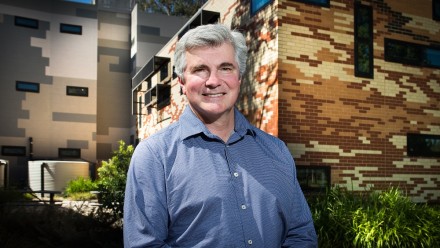Energy overview
Energy overview

2021 has seen a continued move towards clean energy and a quickening of the uptake of renewables both in Australia and elsewhere. As the energy transition begins to unfold, possible pathways to a zero-carbon energy future are becoming clearer, demand for the best possible technological solutions rises, and economic and social opportunities and challenges are coming into sharper focus.
With many countries having adopted net-zero commitments and net-zero trajectories being considered in boardrooms around the world, attention is shifting to the zero-emissions technologies required to achieve them. Over the past 12 months, ANU research has made many important contributions to both the development and refinement of these technologies, their effective and efficient deployment, the institutional and regulatory frameworks to enable energy transition as well as economic and social ramifications.
The prospect of a hydrogen economy has been particularly prominent, and ANU research in this area has garnered much attention. Examples are the development of Liquid Organic Hydrogen Storage, advanced hydrogen storage systems based on nano-bubbles in layered materials, and research on direct photoelectrochemical production of hydrogen. Other aspects of ANU hydrogen research, under the Zero-Carbon Energy for Asia-Pacific Grand Challenge, have looked at the relative cost and emissions of ‘green’ versus ‘blue’ hydrogen and conditions for making green hydrogen cheaply, certification schemes for clean hydrogen, green ammonia for use in Japanese power generation, and more. Decarbonisation of heavy industry, including for high temperature processes that have always relied on fossil fuels, is a rapidly emerging area of clean energy research. ANU is a core partner of a national program to seek ways to produce resources such as steel and other heavy metals without carbon dioxide emissions. The Heavy Industry Low-carbon Transition Cooperative Research Centre is a collaboration between government, industry and universities. ANU contributions under the HILT CRC will include technical as well as economic aspects of zero-emissions (‘green’) iron and steel production.
Among many other technology-based research achievements, ANU researchers have led developments in solar photovoltaics, further driving renewable energy generation and integration. This work is focused on realising the full potential of solar as a clean, affordable, and sustainable energy source. Specific projects include the development of bifacial (dual-sided) solar cells using laser technology, and support in the development of the world’s thinnest solar cells.
Resilient energy systems continue to be the core focus of the Battery Storage and Grid Integration Program (BSGIP). Over the past year, the program contributed research to various aspects of community and battery development, including developing a framework that evaluates the social, technical and economic impacts of neighbourhood batteries, electric transport, and microgrids to bolster the energy resilience of residents recovering from the fire ravaged New South Wales south coast.
ANU research in 2022 has also covered a range of social, economic and strategic aspects of energy transition and energy policy. This includes national long-term emissions strategies, various aspects of the social and community aspects of the transition, as well as the technological, economic, trade and investment elements. This work illustrates the importance of evidence and soundly-based analysis to inform decisions by companies and governments, and to illuminate the public debate in a large area of the global economy that will see massive change in years and decades to come.
Many of our research programs, projects and research leaders have secured external funding during 2021, some at large scale, including from industry, governments, and the Australian Research Council (include a Laureate Fellowship awarded to Prof Yun Liu).
The many researchers and professional staff in the energy field at ANU have shown tireless commitment to the goal of high quality research that has impact in the world, and we are well placed to make a big difference in future years.
Professor Frank Jotzo
Head of Energy







